Restrained
Rodrigo Prieto AMC ASC / The Irishman
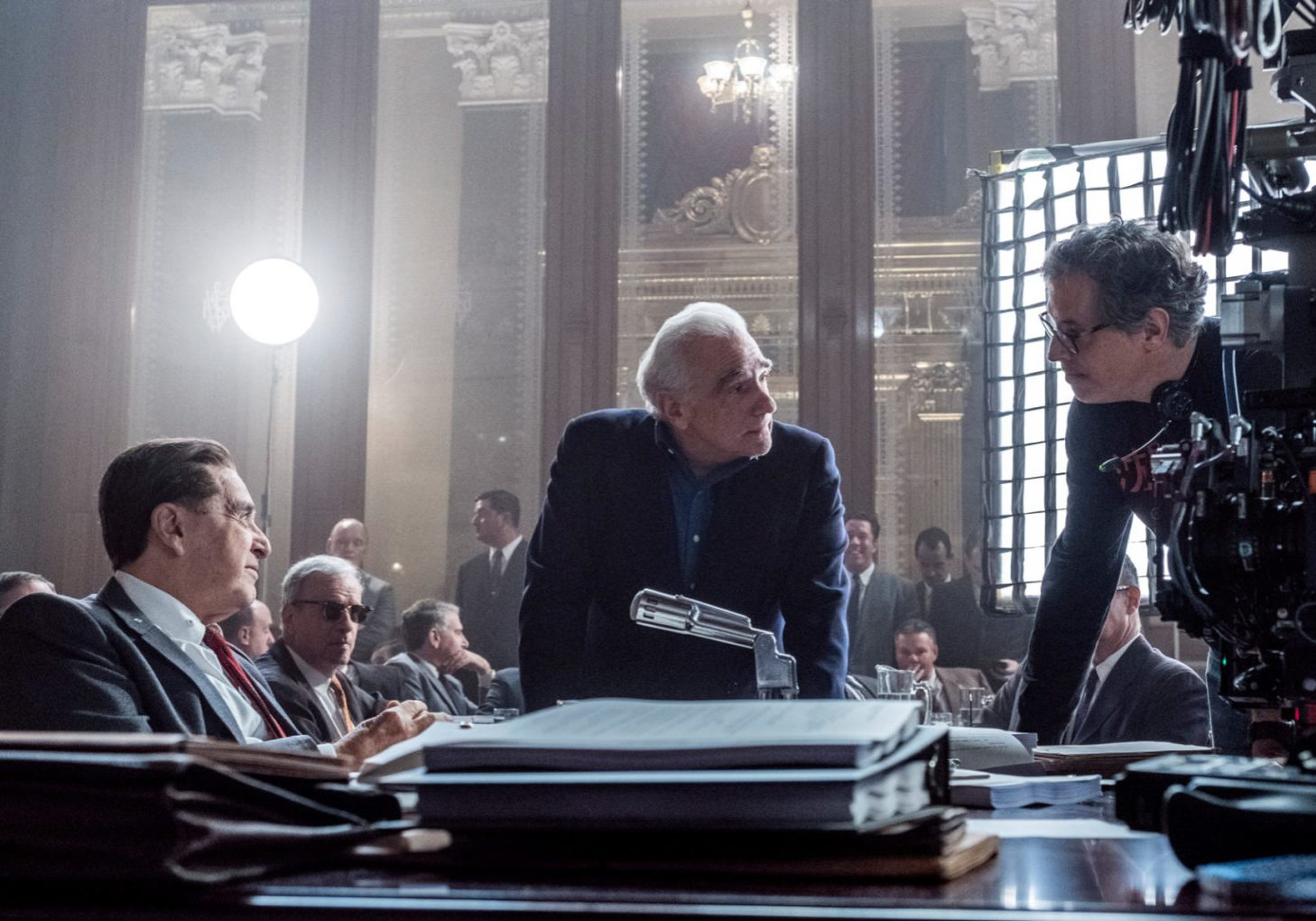
Restrained
Rodrigo Prieto AMC ASC / The Irishman
BY: Ron Prince
The Irishman is Martin Scorsese's epic saga of organised crime in post-war America, as told by a hit man. Thrillingly shot and superbly acted, it has been widely applauded as one of the director's best-ever films, with pulses of violence, betrayal, dishonesty and emotional bankruptcy coursing through its icy veins.
The $159m Netflix movie features a trio of superstar players, with Robert De Niro as Frank "The Irishman" Sheeran, Al Pacino as labour union leader Jimmy Hoffa, and Joe Pesci as senior mobster Russell Bufalino. The Irishman also stars Anna Paquin, Bobby Cannavale, Ray Romano, Sebastian Maniscalco and Harvey Keitel.
Based on the 2004 book I Heard You Paint Houses by Charles Brandt, and adapted for the screen by Steve Zaillian, the biographical film follows Sheeran as he recalls his former years working as a hit man for the Bufalino crime family. Sheeran died in 2003 aged 83.
Looking back on his life, the WWII veteran - whose military experience in executing enemy prisoners densensitised him towards the act of killing and schooled him in obeying orders - reflects on his most prolific cold-blooded hits for the notorious Bufalino crime family during the 1950s, '60s and '70s. In particular, Sheeran muses over his own involvement in the mysterious disappearance of his good friend Jimmy Hoffa, the powerful Teamster boss, also tied to organised crime, in 1975.

The film has been talked about for the "youthification" technology, developed by Lucasfilm's Industrial Light & Magic, which was used to de-age the key cast and allowed them to play the same characters over several decades in the story.
The film been widely praised for its muted and melancholic palette, as well as its restrained camerawork, executed by cinematographer Rodrigo Prieto AMC ASC, who also shot Scorsese's The Wolf Of Wall Street (2013) and Silence (2016). Prieto was Oscar-nominated for Silence as well as Ang Lee's Brokeback Mountain (2005).
Whist The Irishman contains a small number of Scorsese's signature travelling shots, the camerawork is less-apparently stylised than many other films in his considerable canon. Rather than glamourising the on-screen violence with multiple oblique angles on stabbings and shootings, Prieto's photographic manoeuvres turn the bloodshed into a more mundane and matter-of-fact process, bereft of visual exaltation. To Frank Sheeran, killing is just another job.
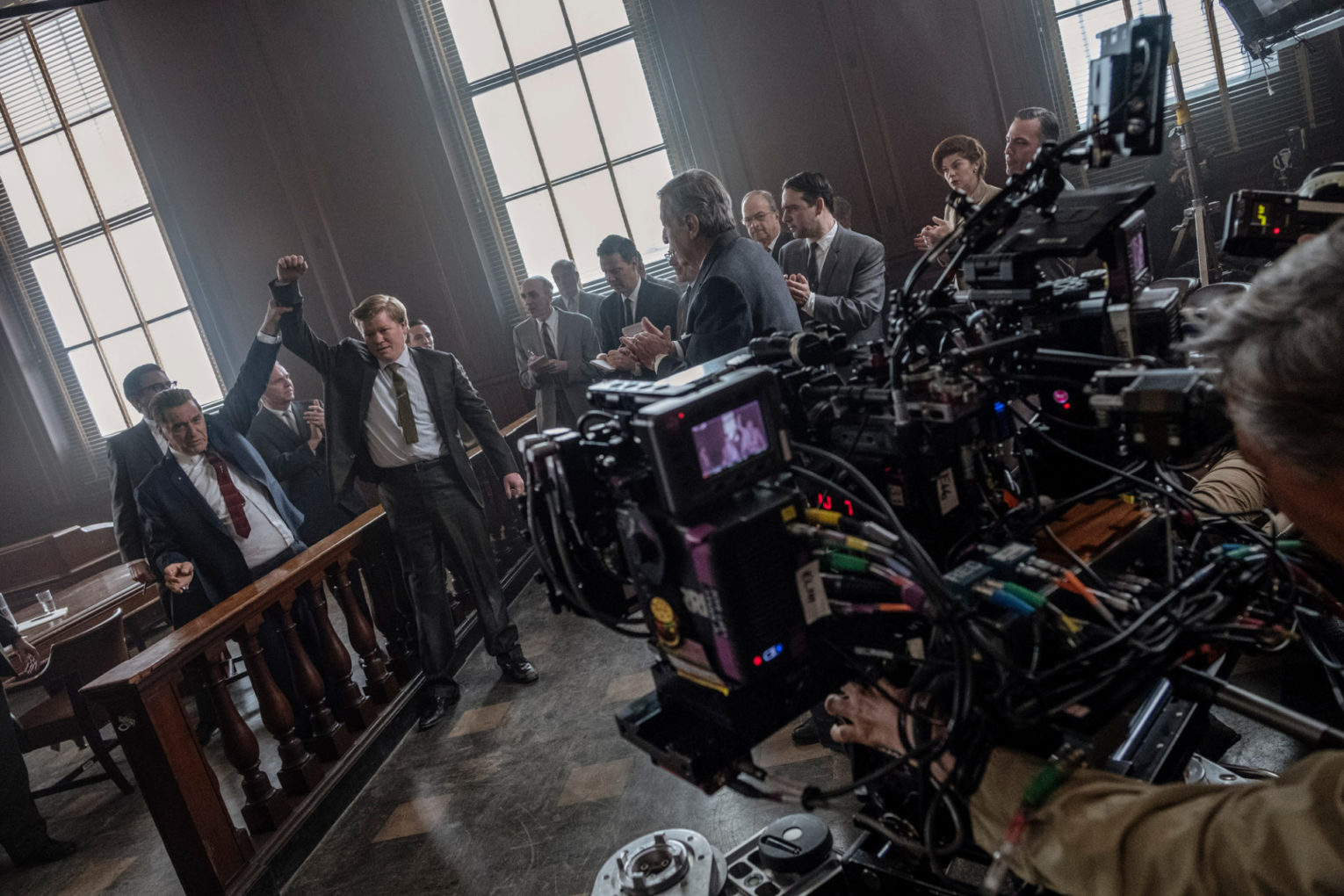
Principal photography took place from October 18 2017 to January 26 2018, with around 300 scenes needing to be filmed and involving one or two company moves almost every day. Locations across New York's five boroughs doubled for Philadelphia, Washington D.C., Miami, Detroit and Manhattan. These included carefully chosen sites in Queens, Brooklyn, Harlem, The Bronx, White Plains and Manhattan, plus Montebello and Suffern in Rockland County, and Red Hook in Dutchess County.
Most of the sets were built and shot at Marcy Armory in Williamsburg, including The Villa Di Roma, the Detroit house where Hoffa is shot, and the Howard Johnson restaurant interiors. The production also filmed at Kaufman Astoria Studios, where the interior of Umberto's Clam House was built for the killing of Joe Gallo, along with the interiors of Sheeran's houses. The many car interiors scenes were shot on the stages at Kauffman Astoria.
In tune with the time-shifting storyline, Prieto couched the aesthetic look of the production around different Kodak photographic film stocks of the 1950s, '60s and '70s. When it came to the shoot, all shots that did not involve the de-ageing of the performers, and all second unit photography, were shot on 35mm Kodak film.
For the shots that needed youth-inducing treatment in post production, Prieto collaborated with VFX supervisor Pablo Helman of Industrial Light & Magic and ARRI CS New York, on the development of a special digital camera rig, that incorporated a Red Helium as the main camera, with ARRI Alexa Minis fitted on either side as witness cameras capturing the flanks of the actors faces. This rig was nicknamed the Three Headed Monster.
Ron Prince caught up with the cinematographer to discover more about his work on the movie.
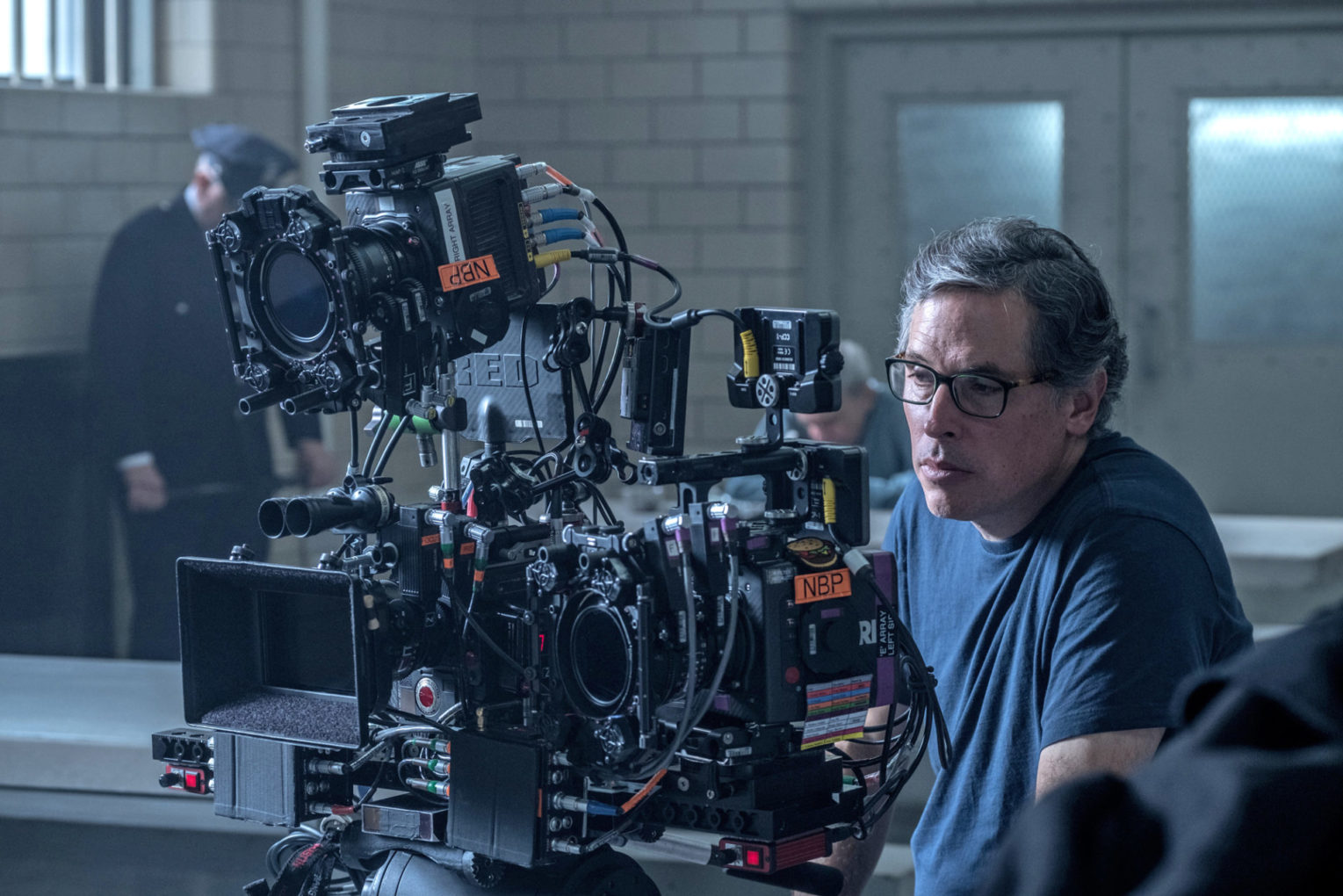
When did you first learn about this film? And what did you feel about the script?
RP: I initially heard about the film when Marty and I were in post on Silence. I actually read the book before I read the script, and found the story to be very interesting and hugely entertaining. Along with organised crime and the Jimmy Hoffa story, it was also peppered with all sorts of US historical aspects from the several different decades. It was pretty epic in scope and I realised it would be very challenging to visualise those different decades. It was very exciting for me to come up with a visual design for such a vast story.
When you first discussed the look of The Irishman with Martin, how did you envisage the look of the movie?
RP: The story is told as a remembrance; as recollections that flash between the present day and previous time periods, but in relatively chronological order. When trying to define the look of the movie, Marty mentioned to me very early-on his thoughts about it being like a home movie - not in the way that the camera might be shaky, or with grainy images, but in the way in might evoke the kind of feeling and emotion you get from the visual memory of the past.
What research did you do?
RP: I researched old still photography emulsions that were popular during those times, and we decided to emulate the look and colour reproduction of Kodachrome for our scenes in the 1950s, and Kodak Ektachrome for those set in the 1960s.
For the 1970s I took a different approach. I knew those two other looks would be very colourful and thought we should start to drain the picture of colour later in the story to mirror the turns of events in Frank Sheeran's life. So, for the 1970s, I decided on a look that would emulate the ENR process, invented by Ernesto Novelli Rimo at Technicolor Rome for Vittorio Storaro AIC ASC. This is a silver retention process in the printing phase, which results in a high-contrast image, with deep blacks, and reduced colour saturation. On The Irishman, we decided to start the '70s period with a moderate ENR look, almost imperceptible, that would gradually change to a full ENR emulation after Frank kills Hoffa. The result is that in the movie, we shift from high colour saturation in the '50s and '60s, slowly draining the colour as time advances through the '70s all the way to the year 2000.

"For the post processes, the VFX team required depth information in each shot as well as the camera angles around the faces, hence we needed witness cameras beside the main camera. One issue was the actors did not want tracking markers on their faces, as it would be too much of a distraction for them. The three-camera system was designed to avoid this."
- Rodrigo Prieto AMC ASC on the 'Three-Headed Monster' rig
What creative references did you look at?
RP: We looked at a variety of archive stills and photographers from the different periods, including Chauncey Hare, Gary Winogrand, Elliot Erwitt, and Saul Leiter - some of whom used Kodak Kodachrome and Ektachrome stocks. Whilst they were important references for the set and costume design, they also helped to inform a series of LUTs we knew we would have to make, that would be applied on all of the film and digital footage during dailies and post. I also used the still photography as inspiration for lighting and composition. These photographers capture instants in real life that have an emotional impact. I tried to create images in movement that had the same feeling of captured reality as seen from the subjective perspective of our characters.
There weren't too many film references, apart from Crazy Joe (1974, dir. Carlo Lizzani, DP Aldo Tonti), the fictionalised retelling of the murder of mobster Joseph "Crazy Joe" Gallo, who was gunned down in 1972 at Umberto's Clam House in Little Italy. We watched that movie mostly to get a sense of the legend of Joe Gallo. Marty was keen on authenticity, and since Umberto's Clam House does not exist in the corner of Mullberry and Hester Streets, we reproduced it on a different corner on the Lower East Side. With the help of VFX, we stitched shots that started on-location for a night exterior of Umberto's, transitioning into the studio, where we had a big translight outside the windows.
Please give us a few details about the LUTs you created for the film?
RP: Philippe Panzini from Codex helped us create the LUTs, emulating Kodachrome for the scenes that occur during the 1950s and Ektachrome for the '60s. Matt Tomlinson, who handles colour science at Harbor Picture Company, where I later conducted the DI with Yvan Lucas, collaborated closely with Philippe to put the characteristics of those emulsions into workable LUTs that we then use for our dailies and during the DI finishing of the movie. For the '70s we used a LUT that emulated the ENR process. In my mind, these LUTs were key to subtly placing the audience in the feel of each decade, whilst enhancing Frank's emotional journey through the passage of time. We also had to make sure that the LUTs worked the same for the film negative and the digital Red Helium sensor. The colours had to be mapped to reproduce exactly the same on both media, and that is where Matt Tomlinson's colour science came into play
Tell us about the Three-Headed Monster rig you used to film the scenes that required de-aging?
RP: Right from the beginning I knew that the de-aging was integral to the storytelling, and Pablo from ILM led the way in terms of the footage he needed and the development of a specialty camera rig to achieve that.
For the post processes, the VFX team required depth information in each shot as well as the camera angles around the faces, hence we needed witness cameras beside the main camera. One issue was the actors did not want tracking markers on their faces, as it would be too much of a distraction for them. The three-camera system was designed to avoid visible tracking marks on their faces.
From a practical standpoint the weight of the rig was an issue. The witness cameras had to be high quality, the focal lengths had to match the main camera, and the shutters had to be in sync. After a lot of testing, and some failures, we ended-up using Red Helium for the main camera, as it looked good with the LUTs and fulfilled Netflix's 4K origination criteria, with Alexa Minis on both sides. The cameras were fitted with the new Cooke Panchro Classics, and supplemented with Zeiss Super Speeds and Ultra Primes.
Every single part of the rig was designed to keep the overall payload as low as possible, to get it to a manageable weight and size for use on the dolly, a remote head on a crane, or in the hands of the Steadicam operator.

Which Kodak filmstocks did you select?
RP: I used Kodak Vision 3 5207 250D for daytime exteriors and interiors, and Kodak Vision 3 5219 500T for everything else, including all of the night work. I'd estimate the final movie is about 50/50 in terms of film and digital footage. For the 1970s sequences I started pushing both filmstock by one stop, as I wanted the texture and grain to come out more for the latter part of the movie. The film dailies then had the LUTs applied to give us the various Kodachrome, Ektachrome and ENR process looks. Kodak Film Lab in New York processed our film rushes, which was very convenient and made it very affordable to us.
Who were your crew?
RP: Scott Sacamoto operated A-camera and did all the Steadicam work. He has an uncanny ability to always know the best way to execute the shots. Our 1st AC was Trevor Loomis, who did an incredible job wrangling a very complex camera department, with ARRICAM LT film cameras and the Three-Headed Monsters with digital cameras. He kept it all working smoothly as if it were a regular shoot. I operated B-camera, but if there was a handheld scene, I would operate the main camera.
Our gaffer was Bill O'Leary, with whom I have worked on several films. He managed, with great expertise and aplomb, a huge variety of lighting scenarios on-location and on-stage.
Tommy Prate was the key grip, who has been a frequent collaborator on many other projects. The gripping on this film was intensive, especially on-stage, where sets were being built and torn down at a breakneck speed. He managed to keep us ahead of the curve with all the rigging for lighting and backings.
The DIT was Matthew Selkirk. He was instrumental in keeping tabs of the different LUTs for each scene and helping me send references of colour and density for the dailies, which were graded by Elodie Ichter at Harbor.
How did you decide to motivate the camera?
RP: Whilst there are some weaving Steadicam shots, such as the entry to Umberto's Clam House, Marty wanted to keep things simple, with straightforward, rectilinear camera moves, and not so many oblique angles. This was especially true when shooting the scenes with Frank. His job is to bully, intimidate or kill people, which he does in a very matter-of-fact way. So we typically shot most of these quite flat, either frontal or sideways, or with simple nodal pans following the action.
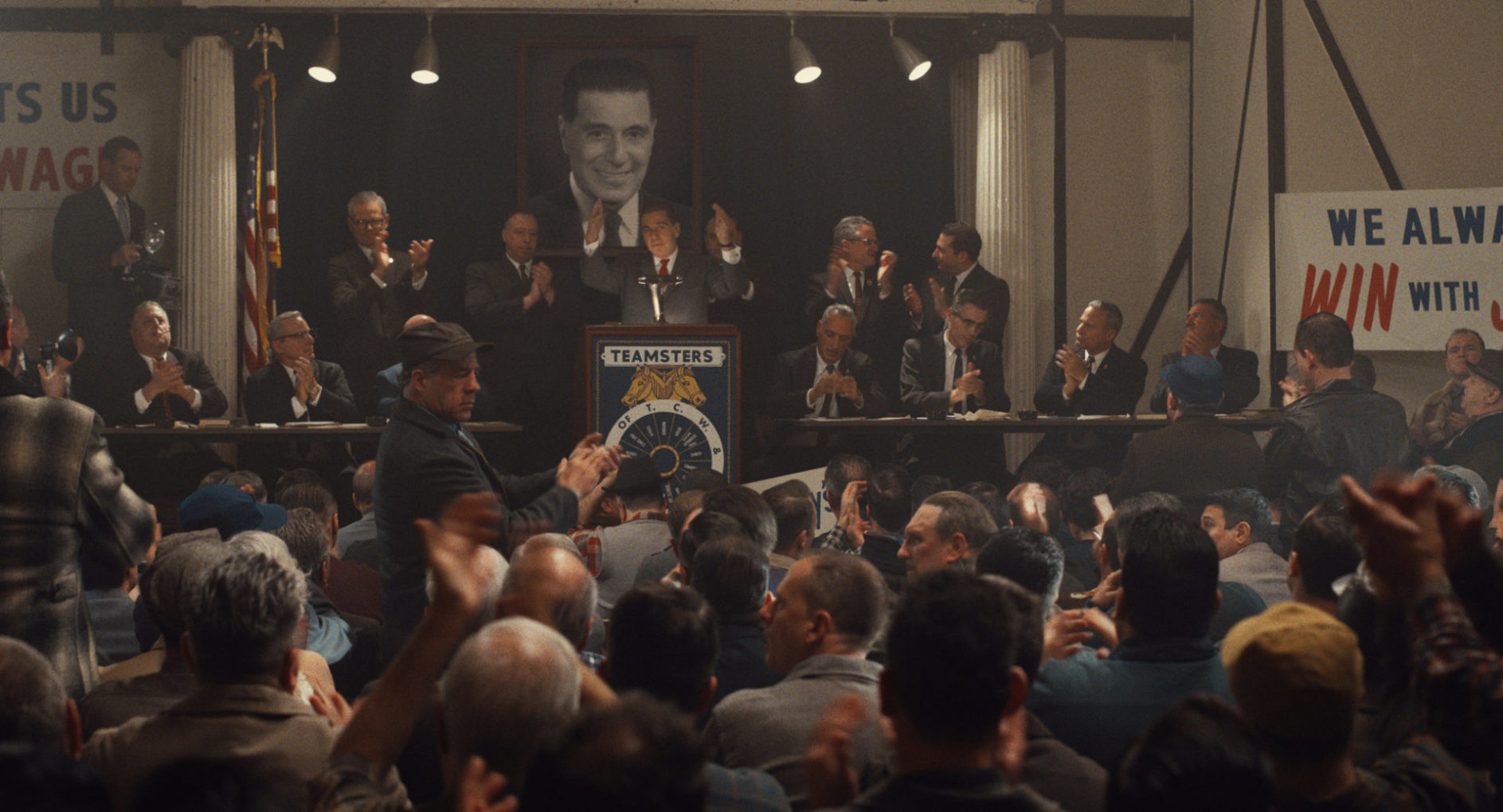
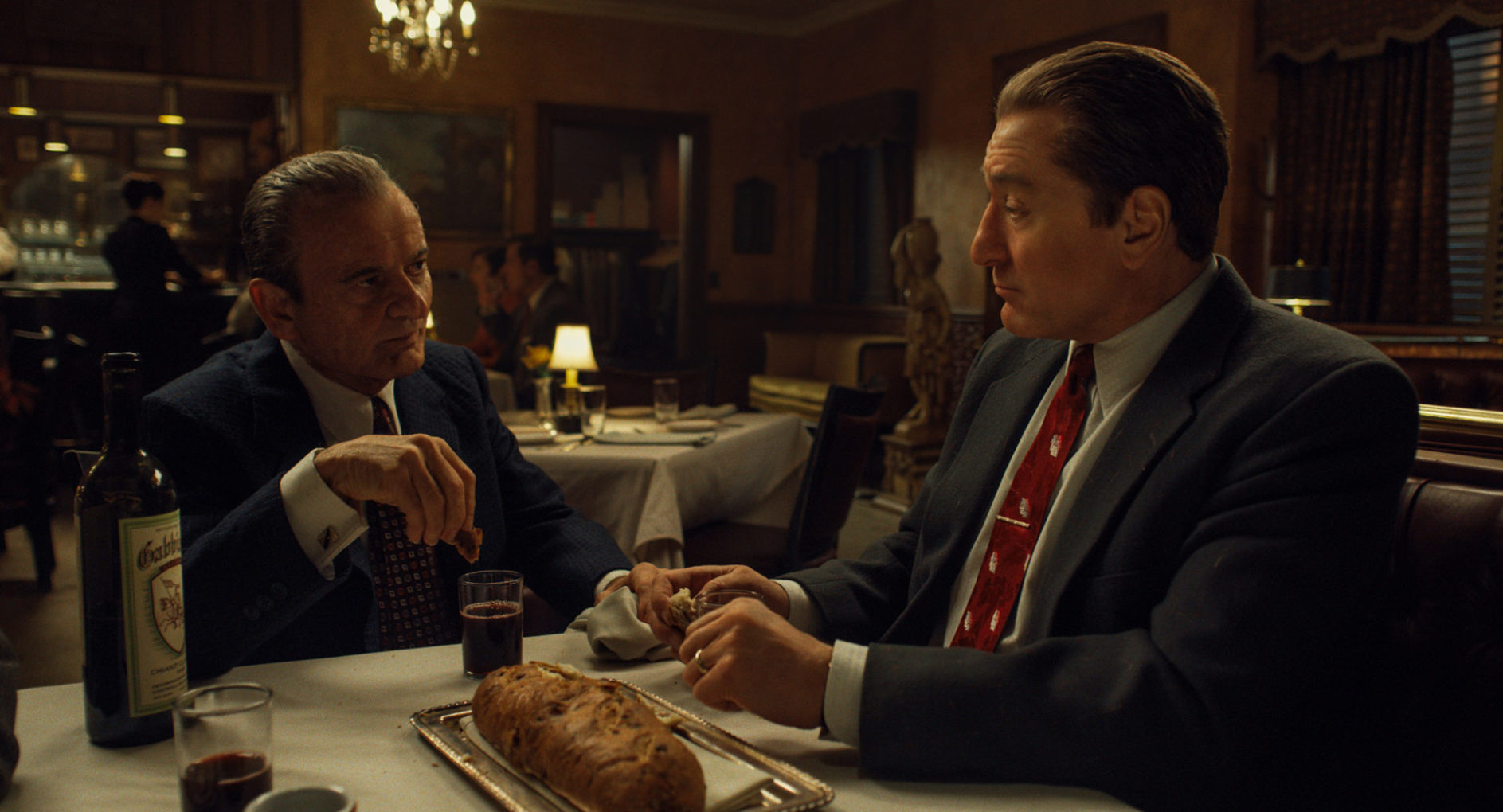
How did you go about shooting the many car interior scenes in the movie?
RP: I felt that shooting them on-location was going to take a lot of time that we did not really have in our schedule. Process trailer work is extremely time-consuming and many times frustrating. Waiting to lock up streets, going back to one, etc. Besides, being a period film, we would not be able to keep driving in loops to do several passes of every scene with period cars and costumed extras.
Everyone agreed to shoot on-stage, but I was worried that greenscreen work would look fake after a while. Also, the actors wanted to wear sunglasses, which would reflect all my lighting!
So, I recommended shooting with walls of LED video. We worked with the Overdrive system at PRG. I had three walls made out of LED panels that measured 10-feet high by 16-feet wide, plus two movable 6'x6' panels. One of the big panels was used for the background of the shots, whilst the others were used to light the actors. The background plates were shot by Backgroundplates.com. Dan Hammond from PRG was our technical guru for all this.
The result is interactive lighting that matches the plates shot on-location. You also get all the accurate reflections on the car and in this case, on the sunglasses worn by the actors.
I rounded out the lighting with a few Source Four Lekos to create sunlight effects, with grips moving branches through the lights to simulate shadows from overhead trees. The result, I think, is quite realistic, and allowed the actors to actually interact with the background plates. The driver could follow the road with the steering wheel and eyes, serving as their eye lines as well as for lighting.
What was your approach to lighting the movie?
RP: Well, the movie has a huge variety of scenes, in different eras, and it was a challenge to give each one its own look. One thing that was important was the colour we achieved on-set, in addition to the looks given by the LUTs. Marty had been to many of the actual locations as a youngster, and remembered how they looked. He recalled the Villa Di Roma being lit by low-wattage lamps, giving a dim but warm and intimate feel. So I gave it that look. He recalled Umberto's Clam House as being "more white". So I treated that with bright, white-coloured, overhead spot lighting, plus some cyan fluorescents in the background for the kitchen area. The scene in the Copacabana Club was not taken from any research, and I decided to give it a more pink hue through the lighting.
We shot Frank's Appreciation Dinner in a ballroom in Harlem as a double for the Latin Casino. I took my inspiration for that from Network (1974, dir Paddy Chayefsky, DP Owen Roizman ASC), which had many tables with tiny lamps and red shades. I showed that scene to Marty and Bob Shaw, our production designer, and they agreed that sort of thing would look great in our film. To light those scenes, I had ARRI SkyPanels in big arrays casting the same red hue as the table lamps, and combined this with a golden light from hundreds of Par Can Birdies on the balconies around the room.
In general terms, my soft sources were typically LED Blanket Lights from Sourcemaker, which we made into shallow 4x4ft, 4x8ft and 8x8ft softboxes with Magic Frost diffusion. During stage work we used ARRI T12 or ARRI 24K Fresnels for our own sunlight. And, we had all manner of LiteGear LiteMats concealed around the place or fitted on ceilings.
"This movie was full of challenges, but I loved going to work on it every day. Working with Marty [Scorsese] is a real joy. He conjures a special way to tell his stories for each film, while allowing his team to thrive creatively and bring our own ideas into the mix."
- Rodrigo Prieto AMC ASC
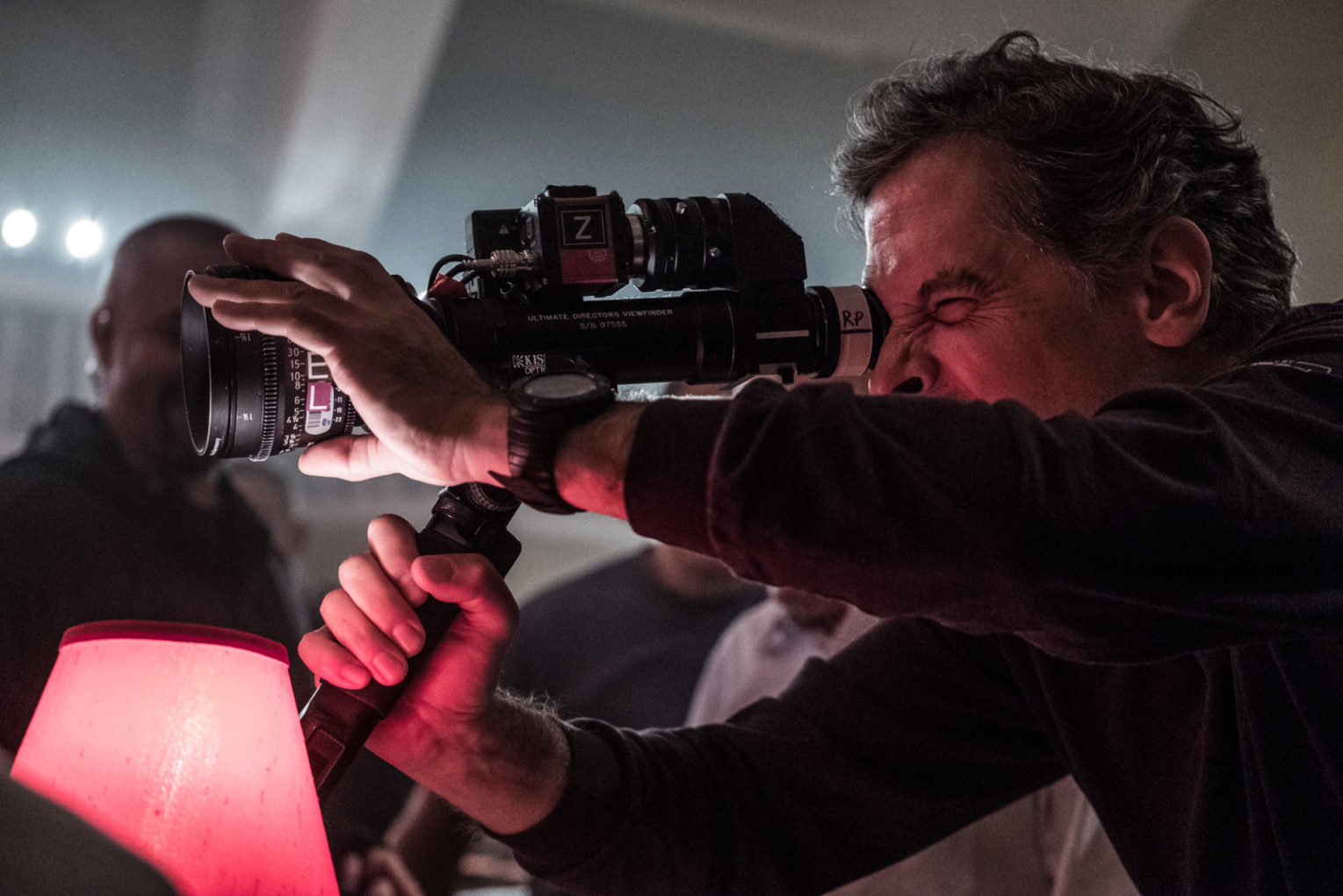
What can you tell us about the DI grade on the film?
RP: I did the 4K grade with Yvan Lucas at Harbor Picture Company in New York. I have done many movies with him, and he is an incredible partner in the final design of the images. We base the grading on the photochemical system of points of density and colour, which I really like and find nicely precise. Yvan's background is grading in a film lab in Paris, so he is proficient in this method of selecting colour. This method of grading is simple, and it respects the LUTs created during the making of the movie because you are not changing the lift, gamma and gain separately.
Were there any happy accidents or unexpected things that worked out well?
RP: Part of making movies inevitably includes facing unforeseen situations. A big part of a cinematographer's job is to find solutions in the heat of the moment. You can't just say, well, let's wrap because this is not what we expected. The show must indeed, go on.
One day, for example, we were shooting in a courtroom in Queens. We were quite high up, maybe about 150' from the ground. We had shot in that room previously, and the main lighting was provided by 18K ARRIMAXs on condor lifts on the street. These lights would illuminate diffusion material we put on the windows, which would then light the room with soft sidelight. When we arrived on-set, the weather was extremely nasty. A blizzard of snow with very high winds made it impossible to safely operate the condors with the lights. So, I decided to change the concept, and let the windows be dark and light the scene with warm light from the incandescent chandeliers in the room. The result is a mix of colour temperatures, with dim bluish light from outside, which looks like we shot at dusk, and warm light, which seemed to come from the practicals of the courtroom. I thought the look of the scene was much more interesting than my original lighting plan.
Was The Irishman the most complicated film you have shot so far from a technical POV?
RP: Yes, I would say so. It was very challenging from a logistical and technical point of view. And I enjoyed every minute of it.
How did it challenge you, and push your skills?
RP: In so many ways! One challenge was to make the scenes shot on stage and on location all feel authentic and realistic. I hope that even to the discerning eye, it is hard to tell what was done on stage and what was on location.
Another big challenge was shooting most of the dialogue scenes with two or three cameras simultaneously. Every light used for one of the actors will have an effect on the reverse angle, so you have to think about what each lighting device will cause on both angles and how to keep the mood and atmosphere on each angle simultaneously. It was not easy, but with the performances we had in front of the cameras, it was well worth the effort.
The driving car interiors were also a new challenge for me. I have done my share of process trailer scenes, but shooting extensive car scenes on stage can look very fake. Using LED walls for lighting and background allowed me to balance interior and exterior exposure while letting the content of the plates do the actual lighting of the actors.
This movie was full of challenges, but I loved going to work on it every day. Working with Marty is a real joy. He conjures a special way to tell his stories for each film, while allowing his team to thrive creatively and bring our own ideas into the mix.







